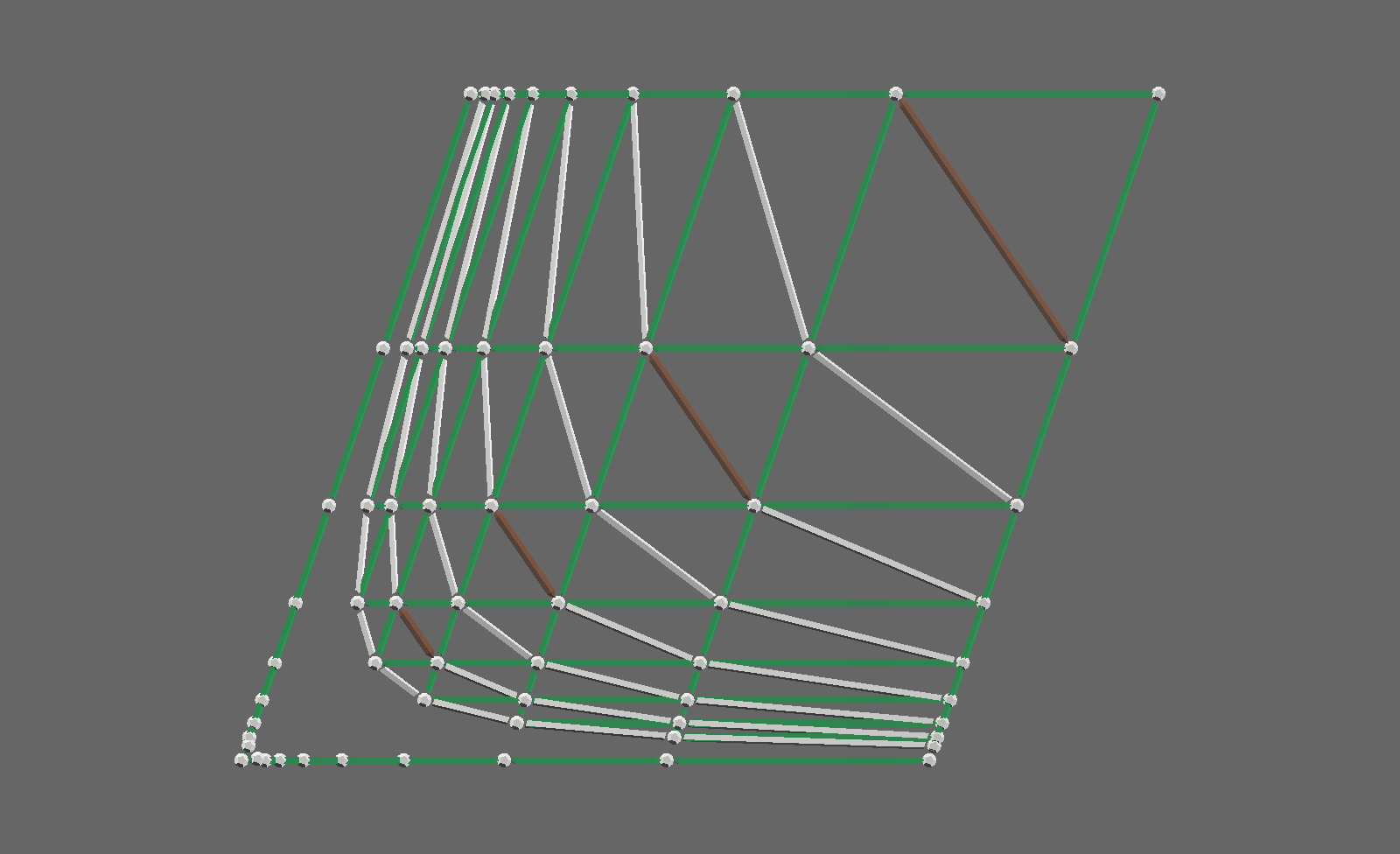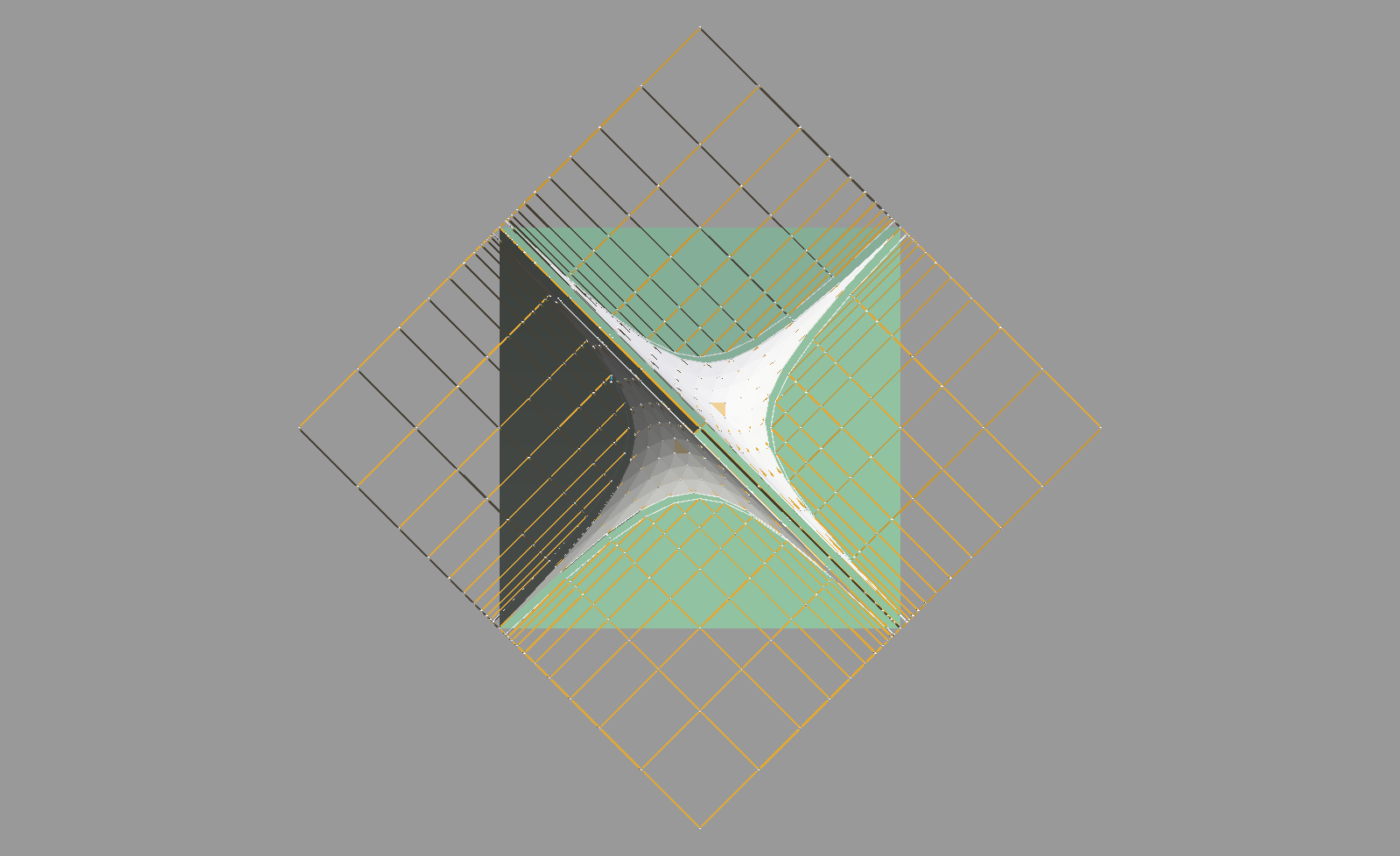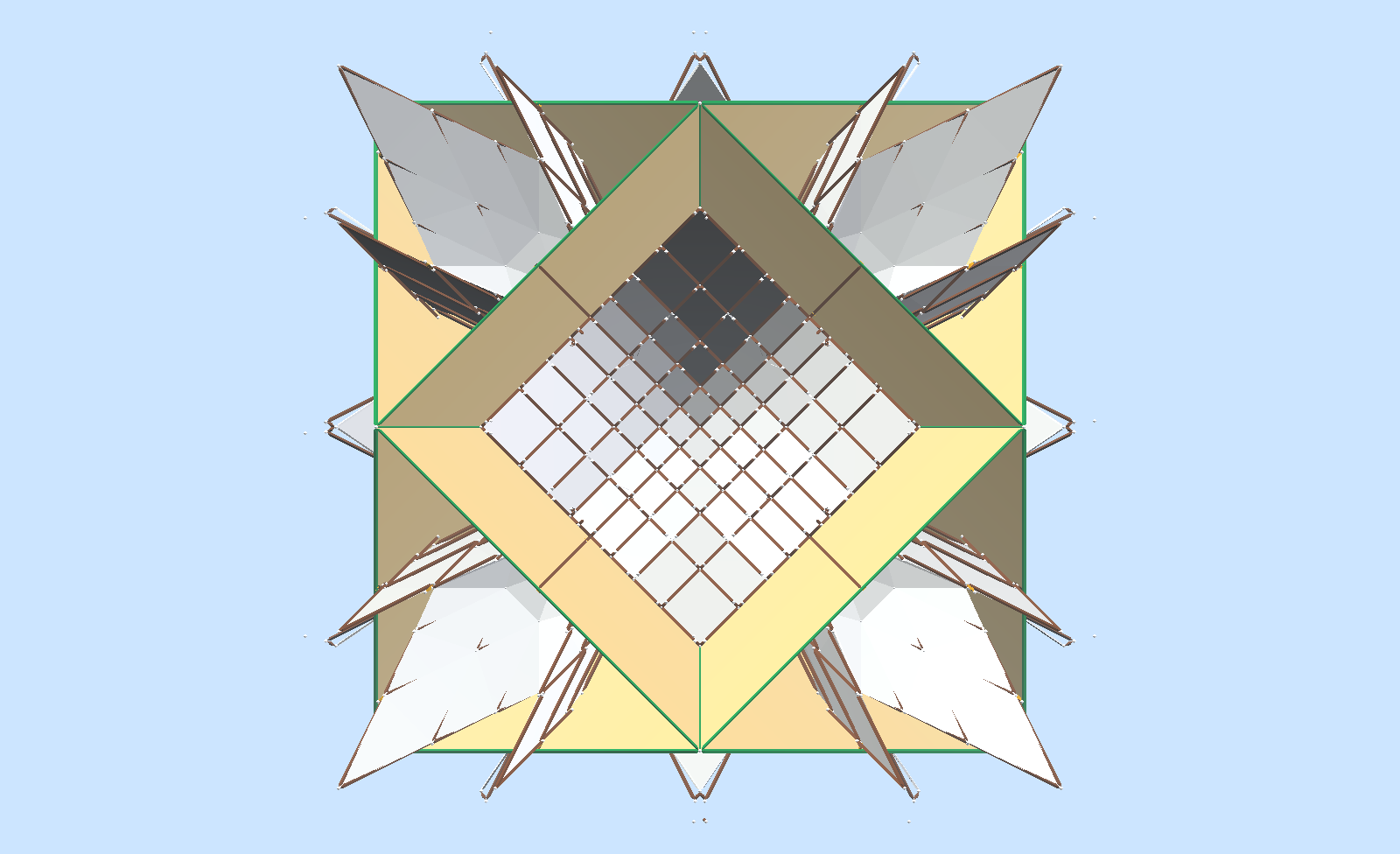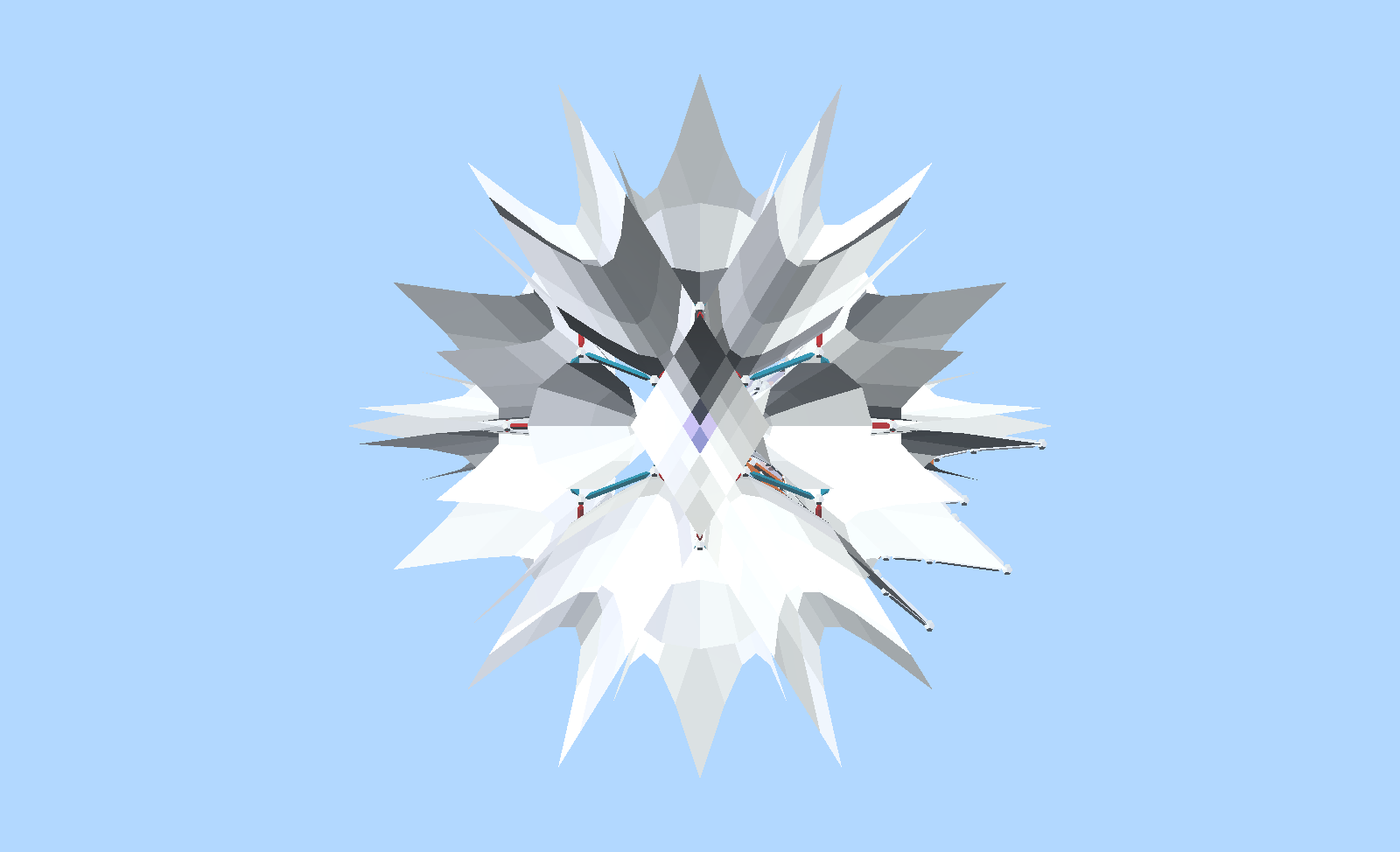Some unconventional hyperboloids. Using a graphical technique, hyperboloids can be generated in various symmetries. This first is in Octahedral symmetery, and indicates surfaces that are defined by x * y * z = constant. This is not a conventional hyperboloid of revolution. Here, the z,y,z axes are asymptotes.
A 3D design created in vZome. Use your mouse or touch to interact.

This shows a 2-D grid, which has intervals on the series 1,1/𝝋 ,1/φ2,… The grid is formed by determining the limit of the series. This is found to be 2+1/𝝋 . Building the grid from the top right, but treating the bottom left corner as an origin, it can be shown that for each indicated curve, all grid points are solutions to equations of the form X * Y = constant, an alternate definition of hyperbola. Using copies of this grid in all xy, xz, and yz planes, a 3D grid is formed, which is how the hyperboloids above are constructed.

This graphical method can be applied with other series’ and in different angular systems. Here, a series with intervals of the form 1, 1/a, 1/a2, … where a= √2 with the limit of the series being 2+√2 generates hyperbolas on a grid.
This method can be applied to other angular systems, such as Oct-Tet, with 60°between grid lines.

This shows a composition of three branch hyperboloids in tetrahedral symmetry. This uses the series 1, 1/a, 1/a2, … where a= √2, in BCC coordinate grid. In this example, the grid axes are not mutually orthogonal, but at arc cos 1/3 = 70.528…°. the BCC angle.

A related model is Hyperboloids in Cube Form
This shows indicated hyperboloid surfaces of 2 kinds, bounded by a cuboctahedron. Note the brown struts from midpoints of cuboctahedron edges to origin that are asymptotes of hyperbolas of both kinds.

Hyperboloid surfaces bounded by a Chamfered Cube, or truncated Rhombic Dodecahedron

Analogously, Hyperboloid surfaces bounded by a Chamfered Dodecahedron, or truncated Triacontahedron
